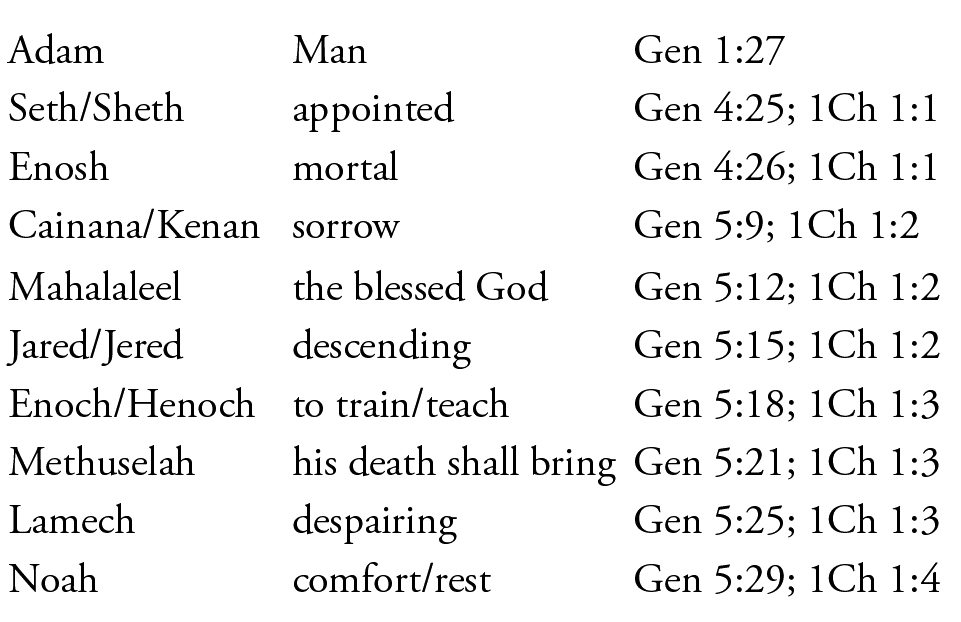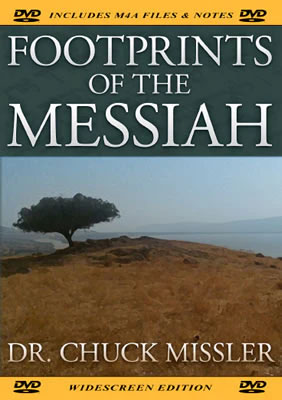Mystery of the Messiah
What Bible study is mentioned twelve times in one book of the Bible, was given on seven different occasions by seven different people, and is hardly ever offered today? Jesus as the Old Testament’s Messiah of Israel!
In the early years of Christianity there was no New Testament. Jesus taught from the Hebrew Scriptures, and after His resurrection the first lesson He gave came straight from the Old Testament:
And beginning with Moses and all the Prophets, he explained to them what was said in all the Scriptures concerning himself.
— Luke 24:25
Peter, Stephen, Philip, Paul, Apollos, Aquila, and Aquila’s wife Priscilla each had the important challenge of presenting Jesus as the Messiah from the Tanakh, the Hebrew Old Testament. Collectively, these lessons were recorded on 12 different occasions:
- Acts 2:22–38: Peter’s first sermon
- Acts 3:18–26: Peter’s second sermon
- Acts 7: Stephen before the Sanhedrin
- Acts 8:26–39: Philip and the Ethiopian Treasurer
- Acts 9:20–22: Saul at Damascus
- Acts 10:42–43: Peter’s sermon to the Gentiles
- Acts 13:16–41: Paul’s sermon at Antioch
- Acts 17:2–3: Paul at Thessalonica
- Acts 18:5: Paul at Corinth
- Acts 18:24–28: Apollos, Aquila, and Priscilla at Ephesus and Corinth
- Acts 26:23: Paul at Agrippa
- Acts 28:23: Paul at Rome
Not once in these passages did Paul or Peter preach without mentioning the Resurrection of Christ. They never let that chance go by, even when they were defending themselves against the authorities. In every case, they reminded their adversaries that, though they had killed Jesus, He had beaten death. We can imagine how frustrated these disbelieving persecutors must have been as Paul and Peter rubbed their noses in the mess the Jewish authorities had created.
Jesus Himself adds two more to this list, two occasions in which He presented Himself from the Scriptures:
- Luke 24:13–27: Jesus with two disciples on the way to Emmaus
- Luke 24:44–48: Jesus with the Apostles in the Upper Room
What words did Jesus give to those two disciples on the road to Emmaus that Sunday morning? That must have been quite some walk! What passages did Jesus quote in reference to Himself in order to open the understandings of Cleopas and his companion?
Through the pages of this book, we begin our own journey to answer that question, to retrace the footsteps of the Messiah.
In the Beginning
The first prophecy of the Messiah does not show up in Isaiah or even in Deuteronomy. To find the first indication of the Messiah in the Old Testament, one simply has to turn to the first few pages of Genesis. Immediately after the sin of our first parents is exposed, God declares His plan of redemption to Adam and Eve (and Satan). He tells the Serpent:
And I will put enmity between thee and the woman, and between thy seed and her seed; it shall bruise thy head, and thou shalt bruise his heel.
— Genesis 3:15
That’s a strange statement to make, that the seed of the woman would bruise the head of the serpent. The seed of humanity even then was believed to come from the man. We now know that the sperm of a man fertilizes the egg of a woman, thus giving rise to the zygote — that both contribute to the new life in the womb.
It is strange that Genesis 3:15 refers to the “seed of the woman” rather than the seed of Adam. We know from the New Testament, though, that God had a sound reason for referencing the prophetic offspring in this manner; Jesus, the Messiah, came by way of God’s work in Mary while she remained a virgin, not sexually known by a man.
Genesis 3:20 refers to Eve as the Mother of all living. And she is. From Eve came all men, even Jesus Christ, by whom we gain eternal life.
The Genealogy of Noah
God doesn’t waste time. In providing the inspired Word to Moses, He begins to reveal His plan of salvation from the very beginning of the Bible.
The Old Testament contains a variety of genealogies and we are tempted to skip over these boring lists at times. However, I am convinced that every name, every place name and every number in the Bible has significance. We can never say, “Toss that out. It’s not important.” Genesis 5 is a great example; it provides us with the sequence of the first 10 generations of mankind, and contained within this genealogy is the first mention of the Gospel itself.
Proverbs 25:2 says, “It is the glory of God to conceal a thing: but the honor of kings is to search out a matter.” It is not past God to place hidden messages in the Bible.
Before we search out the Gospel message found in the Genesis 5 genealogy, though, there are some interesting tidbits to be found in the accounts of Enoch, Methuselah, Lamech, and Noah.
Here’s a riddle: Methuselah was the oldest man on earth, but he died before his father. How could this be, since Methuselah lived 969 years? The answer is easy once you know that Methuselah’s father was Enoch, who never died:
And Enoch walked with God after he begat Methuselah three hundred years, and begat sons and daughters; And all the days of Enoch were three hundred sixty and five years; And Enoch walked with God: and he was not; for God took him.
— Genesis 5:22–25
A son was born to Enoch when he was a youth of 65-years-old, and God gave him a prophecy regarding his newborn child, a prophecy reflected in the boy’s name, “Methuselah.” It comes from two Hebrew roots: muth (מוֹת) which means “death” and shalach (שׁלח), a verb meaning “to bring or send forth.” The name Methuselah therefore means “His death shall bring.”
Noah came from a line of men who feared God and served Him, and for four generations these men preached that judgment was coming upon the world. Noah believed it and prepared for it as instructed by God.
Enoch walked faithfully with God for the next 300 years after Methuselah’s birth, until God “took” Enoch, but God had told him that the judgment would be postponed for a time. As long as his son Methuselah was alive, the judgment of the Flood would be withheld.
It is amusing to think about what dynamics that prophecy might have created in the family of Enoch. We can imagine that whenever Methuselah caught a cold, it created the potential for panic. “Oh no, Methuselah’s ill! This is it!”
When Methuselah was 187 a son named Lamech was born to him. Lamech was 182 when he had a son by the name of Noah. Noah turned 600 the year the Flood came. These ages 187, 182 and 600 add up to 969, the precise age of Methuselah when he died.
Enoch is an interesting character in history. Genesis 5:24 states that God “took him.” The Hebrew word ﬣקל indicates a snatching, a forcible carrying away. It’s understood that Enoch never died; he was translated, or in our vernacular, “raptured.”
It’s fascinating to consider that two Biblical individuals — Enoch and Elijah — did not see death. Enoch was translated about halfway between the times of Adam and Abraham, and Elijah was translated halfway between Abraham and the first coming of Christ.
When the Bible says Enoch walked with God for 300 years, it does not suggest a casual stroll. It implies an agreement, a surrender to God as His witness. And while Enoch disappeared from the earth several thousand years ago, we have the same opportunity, the same privilege as he to walk with God by surrendering to Him, as emphasized by the following verses:
Can two walk together, except they be agreed?
— Amos 3:3
As ye have therefore received Christ Jesus the Lord, so walk ye in him:
— Colossians 2:6
If we live in the Spirit, let us also walk in the Spirit.
— Galatians 5:25
For we walk by faith, not by sight.
— 2 Corinthians 5:7
God gives us Enoch and others as examples of faith throughout the Biblical accounts, normal men and women just like us who put their trust in God and often saw His great power as a result:
By faith Enoch was translated that he should not see death; and was not found, because God had translated him: for before his translation he had this testimony, that he pleased God.
— Hebrews 11:5
A Message in Names
Genesis 5 is admittedly one of those chapters we tend to skip over because of all the strange names. Part of our problem in reading Genesis 5 is that we are given merely the transliteration of the names in our English Bibles; we read the names as they may have been pronounced while completely missing their definitions. The genealogy becomes far more interesting when we look at the actual translations of the names to find out what each name means in Hebrew.
Hebrew words are built on three letter root words, and a variety of tailored meanings are produced by changing the pronunciation or building other letters on top of those roots. For instance the word saphar (root: סשׂר) means “to count” or “to recount” while the derivatives sopher means “writer” and sepher means “book.” The three letter root gives us a clue about a word’s definition. With this in mind, we approach the names of the generations of Adam.
This is the book of the generations of Adam. In the day that God created man, in the likeness of God made he him; Male and female created he them; and blessed them, and called their name Adam, in the day when they were created.
— Genesis 5:1–2
Adam comes from the three root letters aleph-dalet-mem, (ﬡﬢﬦ) which means “man” or “earth.” Fair enough. Adam indicates more than just a single human male, but rather mankind. On a side note, it’s interesting that the same basic elements that make up our body chemistry are the same elements found in the dust of the ground, as Genesis 2 says:
And the LORD God formed man of the dust of the ground, and breathed into his nostrils the breath of life; and man became a living soul.
— Genesis 2:7
Genesis 5:3 tells us Adam lived 130 years and begat a son after his own likeness, after his image, and called his name Seth. After Abel was killed by Cain, Seth was a blessed replacement. Seth’s name is explained by Eve in the previous chapter:
And Adam knew his wife again; and she bare a son, and called his name Seth: For God, said she, hath appointed me another seed instead of Abel, whom Cain slew.
— Genesis 4:25
Here again we see reference to “seed” in relation to a woman.
Seth is from the root (שת) which means “to set” or “to appoint.” The genealogy continues and in Genesis 5:6 we find that Seth lived 105 years and begat Enosh.
Enos, pronounced Enosh (אנוֹשׁ), is a word in Hebrew which means “mortal man” with a connotation of “frail” or “miserable.” That would be kind of a rough handle to have through the school years: “Hey Miserable, you’re on my team!”
We see that Enos lived 90 years and begat a son named Kenan, which some Bible translations write as Kanen, not to be confused with Kanaan (Canaan). Strong’s Concordance defines Kenan as “possession” with a root ﬤננ that is associated with bird nesting.
Balaam, looking down from the heights of Moab, uses a pun upon the name of the Kenites when he prophesies their destruction in Numbers 24:21–23, describing their dwelling as nests in the rock. However, a better definition of the name Kenan (קינָן) is from a root that denotes “sorrow” or “dirge.”
To counter all this negativity, Kenan has a son he names Mahalalel. It’s a mouthful, but it’s a fabulous name, very different than the previous ones. Mahalalel is the combination of two words, Mahal (מְַהֲלַל), which means “praise” or “blessed one” and El (אל) which is “God.” Mahalalel therefore means “The Blessed God” or “The Praised God.”
Mahalalel has a son whom he names Yared or Jared, a name that comes from the verb root (ֶירדָ֫), which means “descent” or “coming down.” Some authorities suggest that his name “shall come down” might be an allusion to the “Sons of God” who came down to corrupt the daughters of men, resulting in the Nephilim of Genesis 6.
Jared lived 162 years and begat the same Enoch mentioned previously. Enoch’s name (ֹחנוך) refers to “training” or “dedication” and connotes his position as a teacher. Enoch, incidentally, gave us the oldest end-times prophecy in the Bible, though we don’t see it in Genesis. We have to look to the New Testament book of Jude to find it:
And Enoch also, the seventh of Adam, prophesied of these saying, Behold the Lord cometh with ten thousands of His saints, to execute judgment upon all, and to convince all that are ungodly among them of all their ungodly deeds which they have ungodly committed, and of all their hard speeches which ungodly sinners have spoken against Him.
— Jude 1:14–15
(Enoch certainly didn’t concern himself with diversifying his vocabulary.) This prophecy is interesting because it tells us that the Lord’s coming is sure, and it describes those who will accompany Him. Even the purpose and result of His coming are embodied in the prophecy of Enoch quoted by Jude.
As described, Enoch’s son Methuselah has the prophetic meaning, “His death shall bring.” At the age of 187, Methusalah had a son Lamech (למָך).The meaning of this name has survived and is realized in our English, words “lament” and “lamentation,” from a root that means “despairing.”
Lamech lived 182 years and begat a son he named Noah. Noah is derived from the word nacham (נח), which means to bring “relief” or “comfort” concerning our toil.
One Integrated Design

The ten names in summary:
- Adam refers to man. “And so it is written, The first Adam became a living being. The last Adam became a life-giving spirit,” (1 Corinthians 15:45).
- Seth means appointed; i.e., fixed in place. “For God did not appoint us to wrath, but to obtain salvation through our Lord Jesus,” (1 Thessalonians 5:9).
- Enosh or Enos means mortal or human; i.e. not everlasting, but finite, with an ending point. “And the Word became flesh and dwelt among us, and we beheld His glory, the glory as of the only begotten of the Father, full of grace and truth,” (John 1:14).
- Kenan implies sorrow or heartbreak, grief, anguish, pain. “And being in agony, He prayed more earnestly. Then His sweat became like great drops of blood falling down to the ground,” (Luke 22:44).
- Mahalalel means Blessed God; God who is worthy to be honored in worship. “Of whom are the fathers and from whom, according to the flesh, Christ came, who is over all, the eternally blessed God. Amen,” (Romans 9:5).
- Jared means shall come down — to humble one’s self, descend to a lower level. “And being found in appearance as a man, He humbled Himself and became obedient to the point of death, even the death on the cross” (Philippians 2:8).
- Enoch implies teaching. “But Simon Peter answered Him, “Lord, to whom shall we go? You have the words of eternal life. Also we have come to believe and know that You are the Christ, the Son of the living God,” (John 6:68–69).
- Methuselah is his death shall bring. That is, his death shall mark the beginning of something new. “Much more then, having now been justified by His blood, we shall be saved from wrath through Him. For if when we were enemies we were reconciled to God through the death of His Son, much more, having been reconciled, we shall be saved by His life,” (Romans 5:9–10).
- Lamech refers to despairing, a hopeless state of being. “And about the ninth hour Jesus cried out with a loud voice, saying, ‘Eli, Eli, lama sabachthani?’ that is “My God, My God, why have You forsaken Me?” (Matthew 27:46; Psalm 22:1).
- Noah means rest, comfort, peace of mind or spirit. “Come to Me, all you who labor and are heavy laden, and I will give you rest,” (Matthew 11:28; Mark 5:15).1
Stringing these words together, we discover a jewel hidden away in the genealogy of Genesis 5. It foretells the explicit story of the Gospel all the way through:
“Man [is] Appointed [to] Mortal Sorrow; [but] The Blessed God [shall] Come Down, Teaching [that] his Death Shall Bring [to] The Despairing, Comfort.
Imagine that! In a lineage of names! Could they have known the message they were leaving for us today? Not likely. Every time I see this astonishing layout, I get shivers. It staggers the mind to realize there is a profound summary of the Christian Gospel tucked away in a genealogy in the Jewish Torah.
It reminds us that God’s plan of redemption was no knee-jerk reaction in the Garden; as Peter tells us, it was planned before the foundation of the world (1 Peter 1:20).
This except is from Dr. Chuck Missler’s book Footprints of the Messiah, available from the K-House Store.
Notes:
- Koinonia Institute member Matthew Matsen deserves the credit for highlighting the list of verses included alongside the meanings of the names above. Matt showed us that the string of names rightly depicts the attributes of the Messiah. ↩







